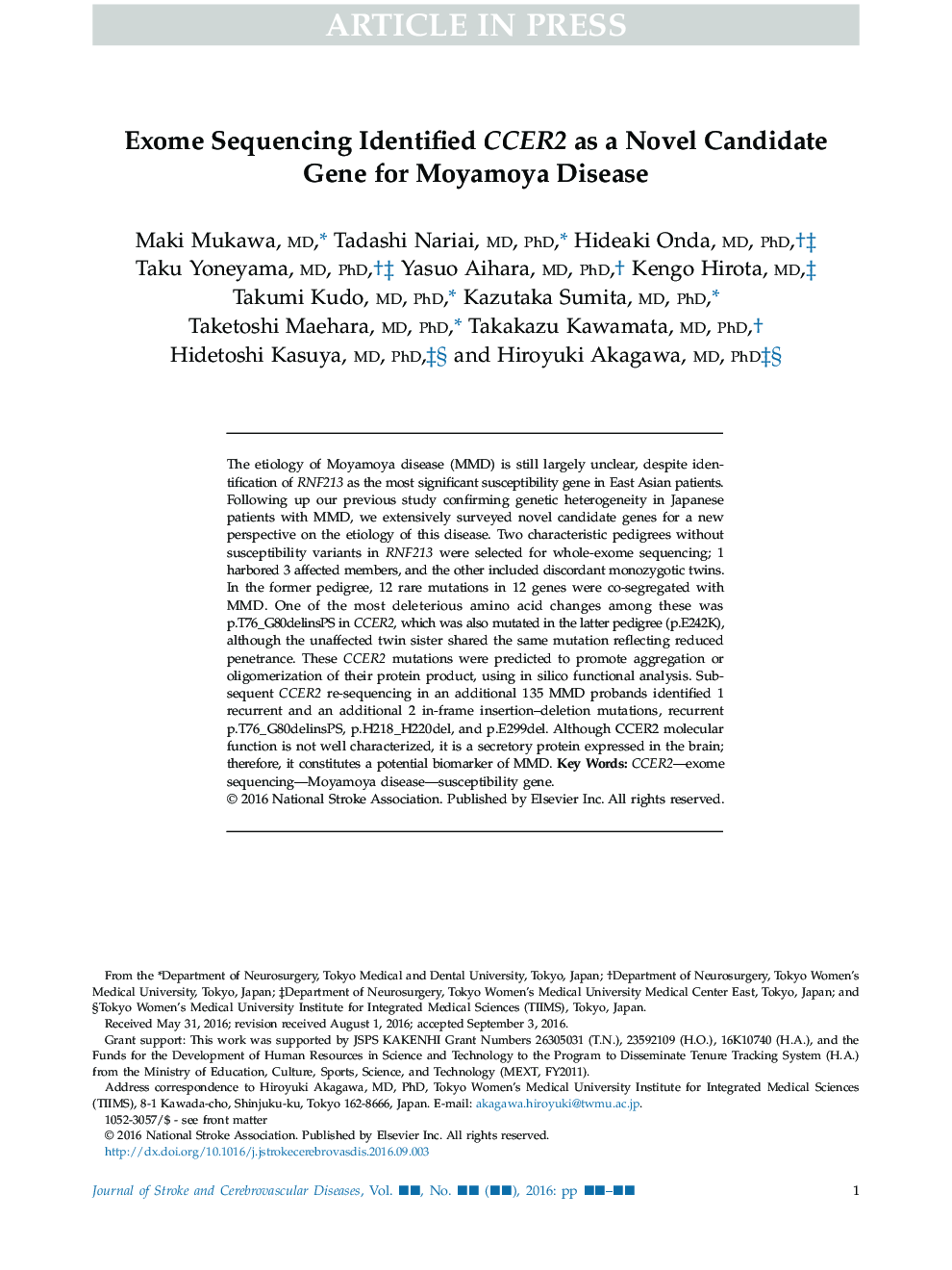| Article ID | Journal | Published Year | Pages | File Type |
|---|---|---|---|---|
| 5574416 | Journal of Stroke and Cerebrovascular Diseases | 2017 | 12 Pages |
Abstract
The etiology of Moyamoya disease (MMD) is still largely unclear, despite identification of RNF213 as the most significant susceptibility gene in East Asian patients. Following up our previous study confirming genetic heterogeneity in Japanese patients with MMD, we extensively surveyed novel candidate genes for a new perspective on the etiology of this disease. Two characteristic pedigrees without susceptibility variants in RNF213 were selected for whole-exome sequencing; 1 harbored 3 affected members, and the other included discordant monozygotic twins. In the former pedigree, 12 rare mutations in 12 genes were co-segregated with MMD. One of the most deleterious amino acid changes among these was p.T76_G80delinsPS in CCER2, which was also mutated in the latter pedigree (p.E242K), although the unaffected twin sister shared the same mutation reflecting reduced penetrance. These CCER2 mutations were predicted to promote aggregation or oligomerization of their protein product, using in silico functional analysis. Subsequent CCER2 re-sequencing in an additional 135 MMD probands identified 1 recurrent and an additional 2 in-frame insertion-deletion mutations, recurrent p.T76_G80delinsPS, p.H218_H220del, and p.E299del. Although CCER2 molecular function is not well characterized, it is a secretory protein expressed in the brain; therefore, it constitutes a potential biomarker of MMD.
Related Topics
Health Sciences
Medicine and Dentistry
Clinical Neurology
Authors
Maki MD, Tadashi MD, PhD, Hideaki MD, PhD, Taku MD, PhD, Yasuo MD, PhD, Kengo MD, Takumi MD, PhD, Kazutaka MD, PhD, Taketoshi MD, PhD, Takakazu MD, PhD, Hidetoshi MD, PhD, Hiroyuki MD, PhD,
